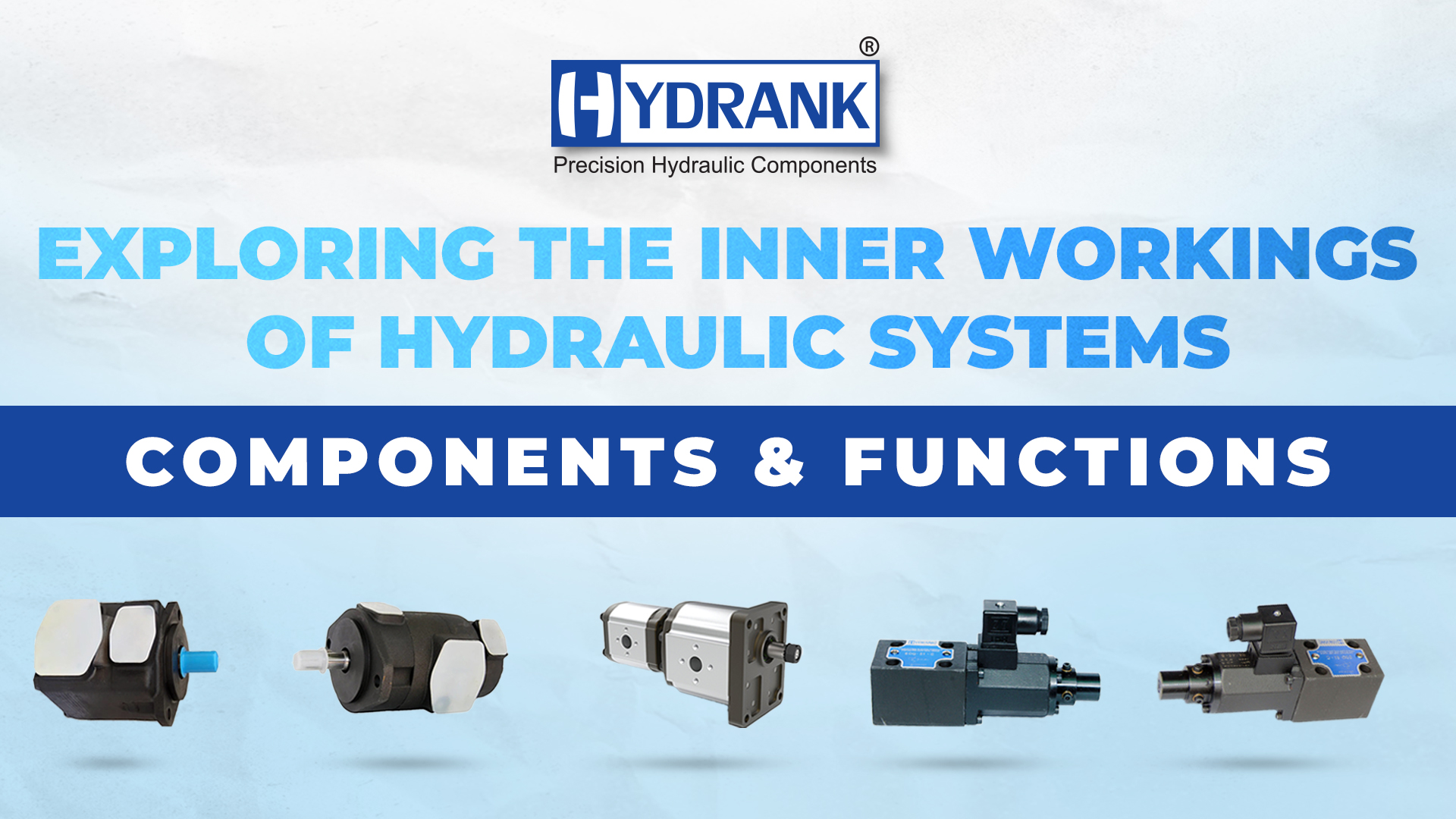-
Exploring the Inner Workings of Hydraulic Systems: Components and Functions

Hydraulic systems play a pivotal role in numerous industrial applications, powering machinery and providing the force necessary for various functions. Understanding the inner workings of hydraulic systems is crucial for engineers, technicians, and anyone involved in industries where hydraulic power is utilised. In this blog post, we will delve into the components and functions that make hydraulic systems an indispensable part of modern machinery. Exploring the Inner Workings of Hydraulic Systems: Components and Functions
Hydraulic Systems Overview:
At its core, a hydraulic system is a complex network of components working together to transmit force through the use of fluids, typically hydraulic oil. The system’s primary components include a hydraulic pump, hydraulic fluid, hydraulic cylinders, and various valves. The concept revolves around the fundamental principle of Pascal’s law, stating that changes in pressure applied to an enclosed fluid are transmitted undiminished throughout the fluid in all directions.
Types of Hydraulic Pumps:
- Gear Pumps:
Gear pumps are among the simplest and most cost-effective types of hydraulic pumps. They operate by meshing two gears that push hydraulic fluid from the pump’s inlet to the outlet. While gear pumps are efficient and reliable, they are better suited for lower-pressure applications due to their design limitations.
- Vane Pumps:
Vane pumps utilise a slotted rotor with vanes that slide in and out. As the rotor spins, the vanes maintain contact with the internal surface of the pump’s housing, creating chambers that draw in and expel hydraulic fluid. Vane pumps offer higher efficiency and are suitable for medium-pressure applications.
- Piston Pumps:
Piston pumps are more complex but provide high efficiency and can handle high-pressure applications. These pumps consist of pistons housed within cylinders, and as the pistons reciprocate, they draw in and expel hydraulic fluid. Variable displacement piston pumps allow for greater control over fluid flow, making them versatile in various industrial settings
Functions of Hydraulic Systems:
- Power Transmission:
Hydraulic systems excel at transmitting power over long distances without a loss in force. This makes them ideal for applications where mechanical linkages or electrical systems may be improved.
- Force Multiplication:
Hydraulic systems allow for significant force multiplication, enabling the lifting and moving of heavy loads with relative ease. This is particularly valuable in industries such as construction, where heavy machinery relies on hydraulic power to perform tasks efficiently.
- Precision Control:
The ability to control hydraulic systems with precision is a key advantage in many applications. Variable displacement pumps and proportional valves allow for fine-tuning of force and speed, making hydraulic systems indispensable in tasks requiring accuracy.
Conclusion:
In conclusion, exploring the inner workings of hydraulic systems unveils a world of intricacies and precision engineering. The components, from pumps to cylinders, work in tandem to harness the power of hydraulic fluid for a myriad of industrial applications. Whether it’s the simplicity of gear pumps, the efficiency of vane pumps, or the power of piston pumps, each type plays a vital role in different scenarios.
Shriank continues to evolve, the demand for efficient and powerful hydraulic systems persists. The synergy of these components contributes to the seamless operation of machinery across various sectors, driving progress and productivity.
In the grand scheme of engineering marvels, hydraulic systems stand out as a testament to human ingenuity. They exemplify how understanding the principles of fluid dynamics and mechanical engineering can lead to transformative technologies. So, the next time you witness the smooth and powerful movement of heavy machinery, remember the intricate dance of components happening within the hydraulic system.
India's Largest Hydraulic Vane Pump Supplier
contact us: +91 98989 09148
Delivery
Prompt and accurate delivery
Client Servicing
Pro after-sales customer support
Quality assurance
Top quality standards
Export
More then 10 countries
